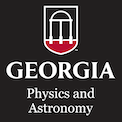Transient absorption in the extreme ultraviolet and x-ray spectral regimes is used to probe chemical dynamics on both the femtosecond and attosecond timescales. Laser-produced high-order harmonics in the soft x-ray can investigate dissociating molecules, ring opening, passage through conical intersections, singlet to triplet transitions, and electronic and vibrational coherences. By extending the probe photon energies to 300 eV in the soft x-ray, carbon species are now readily investigated to reveal atom-specific electronic orbitals during electronic transformations of molecules. Product branches are observed directly and time measurements are obtained for the production of various excited state species. Transient features, indicative of x-ray spectroscopic transitions to dissociative or intermediate states are characterized. On ultrashort timescales, electronic and vibrational wave packet dynamics are observed. A remarkable time-resolved x-ray spectroscopic revolution provides novel opportunities for molecular dynamics investigations on femtosecond and attosecond timescales.
Events Calendar View
-
Applied Physics Seminar
Jan 18, 2019
Ultrafast X-Ray Molecular Dynamics
-
CSP Lunch Seminar
Jan 22, 2019
Estimating the Mass of High Velocity Clouds Using Simulation Maps
-
Applied Physics Seminar
Jan 24, 2019
The Quantum Limit of Interacting Magnetic Waves
The dynamic response of magnetic materials lacks time-reversal symmetry and can often be described through the propagation and evolution of waves of magnetic orientation, or spin waves. These spin waves, or magnons when quantized, can move without electric charge motion, yet spin-orbit interactions allow the spin waves to couple, sometimes very strongly, both to voltages and to illumination. I will describe progress over the last several years in calculating and understanding, in collaboration with experimentalists, the coupling of magnons to microwave and optical photons as well as the manipulation of spin-wave propagation with a voltage. In analogy with optomechanics, two photons will interact, within a cavity containing a ferrite, with a magnon mode to coherently modify the spontaneous emission rate, to exhibit electromagnetically-induced transparency and even to reach the strongly-coupled quantum regime. Patterned magnetic media can also amplify voltage-dependent effects to produce voltage-tunable oscillators or filters.
-
Departmental Colloquium
Jan 24, 2019
Quantum Coherent Electronic Technologies
Electrons in most materials experience dramatic and frequent scattering from other electrons, phonons, and a variety of other excitations. Such scattering events often rapidly dissipate any memory the electron had of its quantum state, so the electrons can be described as an ensemble that is near local thermal equilibrium. If the electrons can retain a good memory of their quantum state, however, then they are quantum coherent and can be used for very unusual and exciting tasks such as quantum computing. Realizing these quantum technologies has traditionally been expected to require very special elements such as superconducting devices or very high mobility transistors, as well as very low temperatures, in order to avoid rapid loss of quantum coherence (decoherence). Over the past fifteen years we and others have identified remarkable examples of room-temperature quantum coherent behavior in condensed matter electronic systems, usually involving spin coherence. Predicting the behavior of these spin coherent systems requires integrating theoretical techniques to cope with energy scales ranging from far smaller than the thermal energy to far larger. I will describe some examples of quantum coherent technologies and identify some of the features they share.
-
CSP Lunch Seminar
Jan 29, 2019
Computational and Mechanical Modeling Aspects of Fibrin Mechanics
-
Applied Physics Seminar
Feb 1, 2019
Current Trends in Micro and Nano Robotics
An autonomous microrobot or a nanorobot with a controllable manipulation system opens up huge potential in nanomedicine, surgery, manufacturing and chemical technology. For example, robots navigating through blood vessels has applications drug delivery and non-invasive surgery. In this talk, we will review the literature in micro-scale and nano-scale robotics research work. While doing so, we will also analyze the literature from a swarm intelligence perspective.
Page 89 of 121, showing 6 records out of 723 total, starting on record 529, ending on 534


